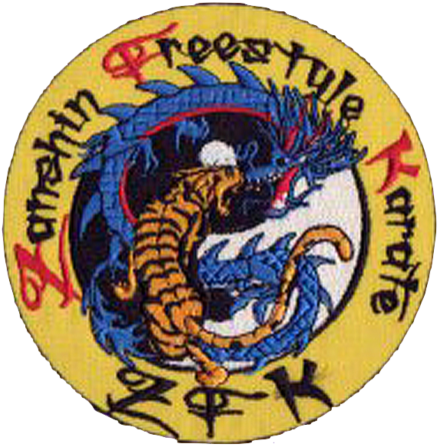The History of Zanshin
Martial arts systems or specific ways of fighting is a concept that dates back to the earliest of times. From the beginning of time humans along with numerous animal groups have bonded together in numbers to improve their chances of survival. Within these groups different fighting techniques, strategies and concepts were developed and over time codified into combat systems that could be passed on from generation to generation.
To understand the history of Zanshin we must go back to the beginning. Although there are many eastern forms of martial arts which have influenced western cultures and their fighting systems, Goju Ryu is at the roots of our fighting system.
Goju Ryu was created by an Okinawan named Chojun Miyagi (1888 – 1953). Goju Ryu Karate translated literally means, ‘Hard soft school of karate’. Miyagi integrated both Chinese fighting systems (Kung Fu) and those of the indigenous Karate systems of Okinawa. Miyagi later traveled to Japan to spread his form of karate and of note to a student named Gogen Yamaguchi. Yamaguchi would later go on to found his own style named Goju Kai which went on to be far more popular than his master’system Goju Ryu.
A martial artist named Tino Ceberano, an Hawaiian, who was graded from a 3rd through to 6th degree by Yamaguchi, migrated to Australia in the mid 1960’s and established a Goju Kai school in Melbourne. One of Ceberano’s students Bob Jones a renowned street fighter in Melbourne went on to be a pioneer in the martial arts. Jones founded a martial arts style named Zen Do Kai in June 1970 based on the fighting system and philosophies of the Goju Kai system. Jones soon discovered that some applications and techniques of the traditional karate systems were not effective in the modern street. Jones began to utilize only the useful and practical techniques of this system and also from other fighting systems. His attitude of only using “Thee best of everything in progression” later became the basis of Zen Do Kai karate. Jones continued to improve his system eventually moving away from the classic, rigid style of karate to a more free flowing, “Freestyle” approach.
During the 1980’s Zen Do Kai became extremely popular with over 300 clubs and around 5000 students across Australia. It is during this time, Head Instructor Brett Harrison trained with the Zen Do Kai system starting in 1982 under then Renshi Billy Manne in Victoria. Harrison in the military at that time trained in many states under numerous instructors until settling in South Australia in 1988.
Since the founding of Zen Do Kai there have been several break away groups from that system including; The Golden Knights and then the Genesis Martial Arts System.
Looking back through the history leading to the founding of the Zanshin Freestyle Karate system it is not unusual to see break away groups. Zanshin Freestyle Karate was founded by Brett Harrison and Antz Veen in January 2009 due to a noticeable difference in the direction the Genesis Martial Arts Group was taking.
The Zanshin Freestyle Karate philosophy is to be a modern, motivated and professional system whilst maintaining the traditional principals found in the roots of the original Goju system. The instructors of the Zanshin Freestyle Karate system are committed to providing a martial arts curriculum combining superior self defense skills with a blend of Karate, kick boxing, jujitsu and weaponry, “The best of everything”, whilst following traditional philosophies.
The Meaning of Zanshin
There is an old Japanese samurai saying, “When the battle is over, tighten your chin strap.” This refers to constant awareness, preparedness for danger and readiness for action. The Japanese saying itself focuses on the end of a combat engagement when it is natural to relax awareness, thinking the danger is over, when in reality it often is not. This concept carries over into the dojo which is not just a training hall but a place where a certain awareness of the possibility of serious combat must constantly be maintained. But for the serious martial artist this heightened state of awareness becomes a natural part of the psyche, something that is automatically turned on while awake as well as during sleep.
In karate practice when kata are completed students are expected to stand quietly for a few seconds. This is zanshin practice, the maintenance of readiness for action even though the physical aspect of a particular kata is finished. Zanshin also supports good technique in the kata. The idea behind partner practice is that technique becomes second nature, while Zanshin continues to be developed.
Zanshin is what many soldiers, law enforcement officers and advanced martial artists endeavour to develop. In some forms of meditation and Zen, Zanshin is also a goal for students, total attention to the moment, the focusing of the mind (without thought or emotion) on everything around them.
Yin & Yang
Yin and Yang (or earth and heaven) describes two opposing and, at the same time, complementary (completing) aspects of any one phenomenon (object or process) or comparison of any two phenomena. They are universal standards of quality at the basis of the systems of correspondence seen in most branches of classical Chinese science and philosophy.

